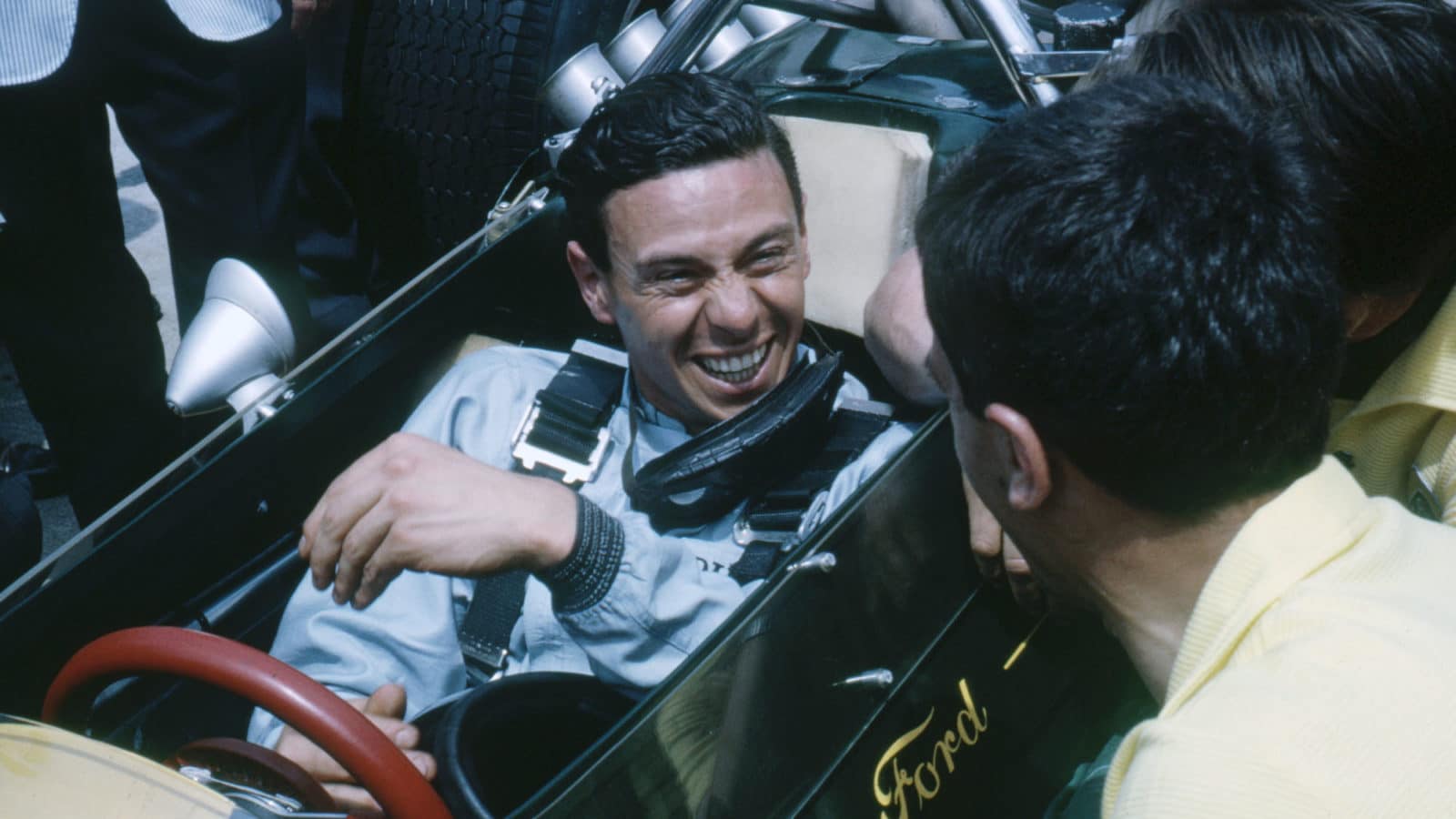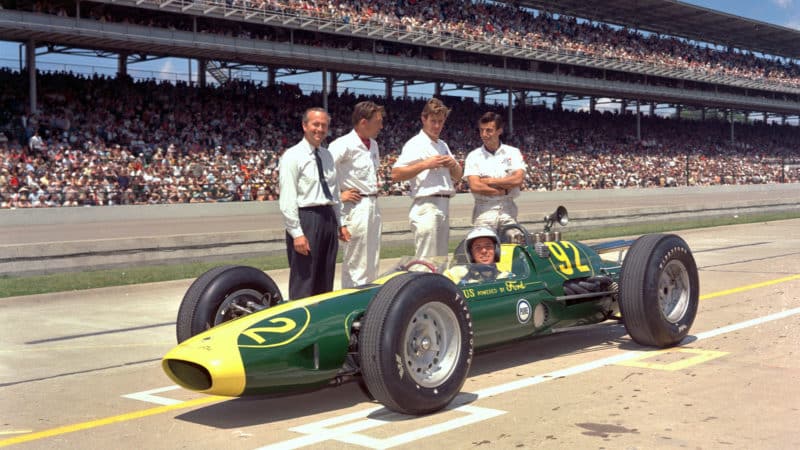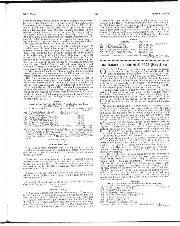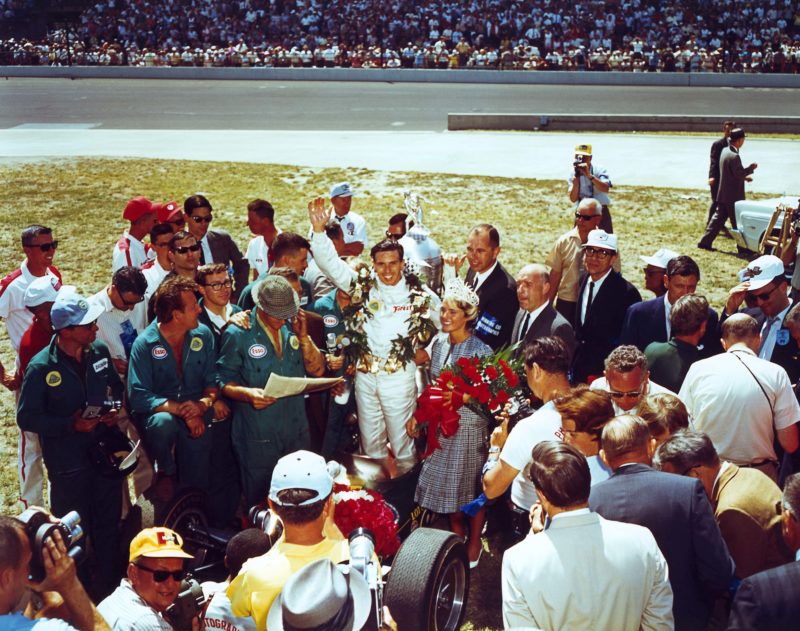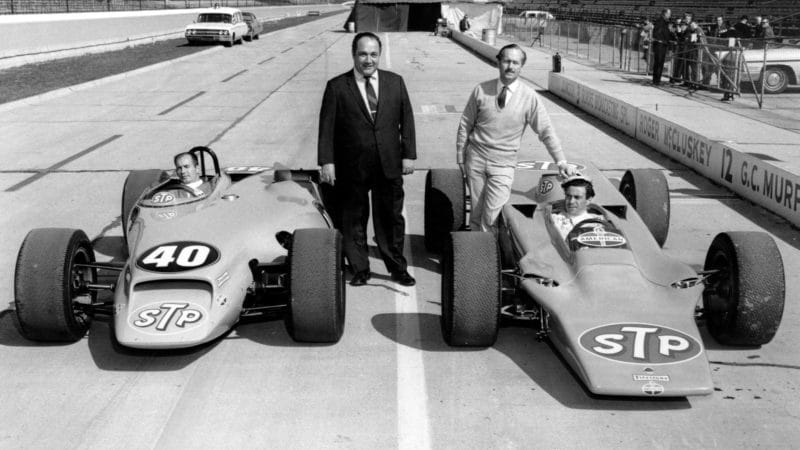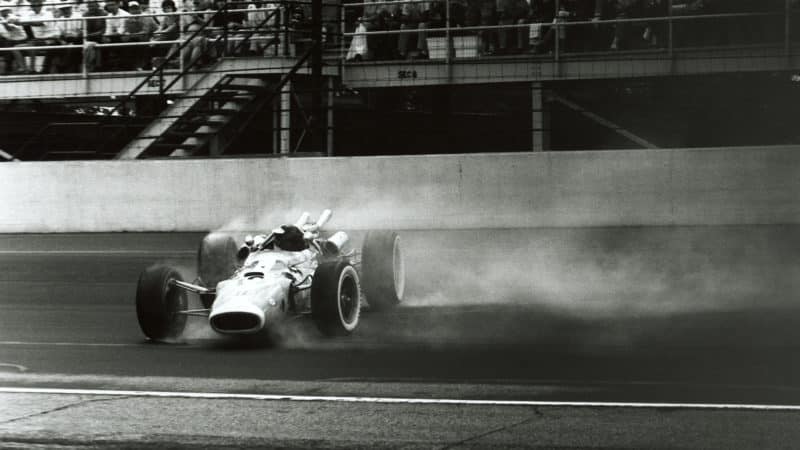“Jimmy was willing to do it and that’s what I really liked about him, he loved to race and wasn’t worried about protecting his reputation,” says Gurney, who had made his debut at Indy a year earlier in Mickey Thompson’s rear-engined roller skate.
“But I think no matter who it is, the first time you go to that place it’s a pretty daunting situation. Initially, he wasn’t sure and it took a while for him to get dialled in, but once he did he was right on the pace.”
Starting fifth, Clark’s Lotus was slower on the two long straightaways but quicker through the corners than the roadsters, and his one pitstop strategy allowed him to lead 28 laps, although Jones clearly had the fastest combination.
“He really wasn’t a thorn in my side all day, they just weren’t in our ballpark,” says Parnelli, who led 167 of 200 laps and finished 34 seconds ahead of Clark in a race soaked in controversy after Jones’ car leaked oil and was nearly black-flagged.
Gurney, who wound up starting 12th and finishing seventh after running all afternoon on seven cylinders, chuckles at the memory of owner J C Agajanian begging chief steward Harlan Fengler not to throw the black flag at ’ol Calhoun.
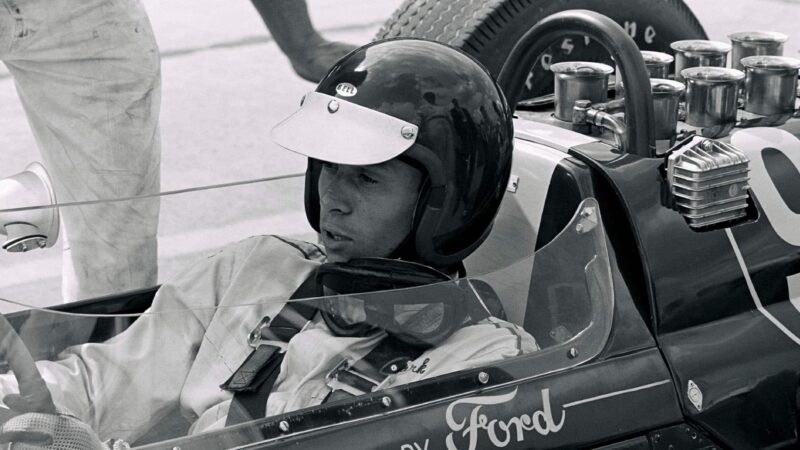
Clark finished second on his Indy debut, but could’ve won had Jones been disqualified
Getty Images
“The Americans didn’t want some Limey to come over here and win but I think if the race would have been held in England, it would have been the other way round. But he did a fine job. He wanted to follow me but I was running sour so I waved him by after three laps and then he settled into a groove and got the bit between his teeth.”
Sandwiched between the red, white and blue legends of Jones and Foyt at the finish, Clark congratulated the winner and never mentioned the oil on his goggles, except to his crew. “He told Colin he wanted to go to another track and show how good the car was, so they came back to Milwaukee that August, where he won the pole and the race,” recalls Eamon ‘Chalkie’ Fullalove, a Lotus mechanic in the ’60s who today remains one of the best fabricators in the vintage F1 business.
“He lapped everyone except A J and, out of respect, he decided just to stay behind him the last 20 laps. That race opened some people’s eyes about Jim Clark.”
